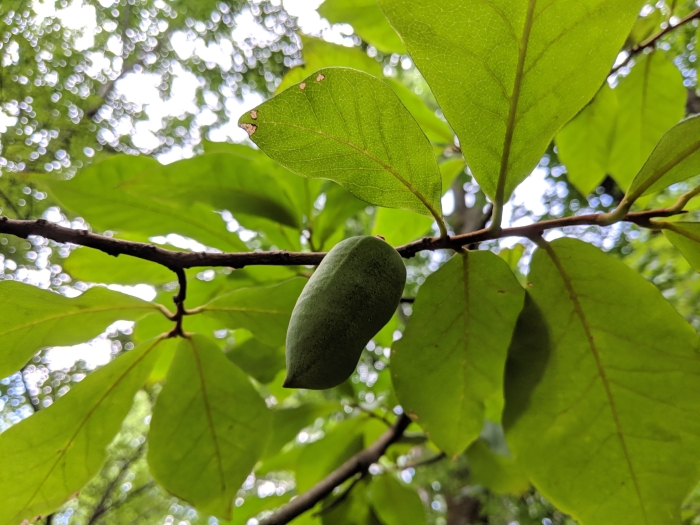Smallflower Pawpaw
(Asimina parviflora)
Smallflower Pawpaw (Asimina parviflora)
/
/

Brucewinter
CC BY-SA 4.0
Image By:
Brucewinter
Recorded By:
Copyright:
CC BY-SA 4.0
Copyright Notice:
Photo by: Brucewinter | License Type: CC BY-SA 4.0 | License URL: https://creativecommons.org/licenses/by-sa/4.0 | Uploader: Brucewinter | Publisher: Wikimedia Commons | Title: Asimina_parviflora_fruit.jpg | Notes: ;Name:Asphodeline lutea ;Family:Liliaceae Image no. 1 Permission granted to use under GFDL by Kurt Stueber Source: [http://www.biolib.de www.biolib.de] {{GFDL}} |






















































Estimated Native Range
Summary
Asimina parviflora, commonly known as Smallflower Pawpaw, is a deciduous shrub or small tree native to the understory of deciduous forests in the Southeastern United States. It typically grows to a height of 6-15 feet (1.8-4.5 meters) and a width of 4-8 feet (1.2-2.4 meters). The Smallflower Pawpaw has a slender form with maroon, fleshy flowers that appear in the spring. Although not as showy as some ornamental plants, the flowers are intriguing due to their unusual color and structure. The plant produces an edible fruit, which is smaller than that of its relative, Asimina triloba, the Pawpaw tree. The fruit is appreciated by wildlife and can be consumed by humans as well.
The Smallflower Pawpaw is valued for its low maintenance and adaptability to a range of soil conditions, making it suitable for naturalistic plantings and wildlife gardens. It can be used as an understory plant in larger landscapes or as a specimen in smaller gardens. It prefers part shade but can tolerate full sun if provided with sufficient moisture. The plant requires medium to high amounts of water and thrives in soils with medium to fast drainage. While it is not commonly afflicted by serious diseases or pests, it can suffer from root rot if planted in poorly drained soils. The Smallflower Pawpaw is not known for aggressive roots or significant invasiveness issues. Its pollen is shed as permanent tetrads, a unique characteristic among flowering plants.CC BY-SA 4.0
The Smallflower Pawpaw is valued for its low maintenance and adaptability to a range of soil conditions, making it suitable for naturalistic plantings and wildlife gardens. It can be used as an understory plant in larger landscapes or as a specimen in smaller gardens. It prefers part shade but can tolerate full sun if provided with sufficient moisture. The plant requires medium to high amounts of water and thrives in soils with medium to fast drainage. While it is not commonly afflicted by serious diseases or pests, it can suffer from root rot if planted in poorly drained soils. The Smallflower Pawpaw is not known for aggressive roots or significant invasiveness issues. Its pollen is shed as permanent tetrads, a unique characteristic among flowering plants.CC BY-SA 4.0
Plant Description
- Plant Type: Tree, Shrub
- Height: 3-8 feet
- Width: 2-6 feet
- Growth Rate: Slow
- Flower Color: N/A
- Flowering Season: Spring
- Leaf Retention: Deciduous
Growth Requirements
- Sun: Part Shade, Full Sun
- Water: Medium
- Drainage: Medium
Common Uses
Bird Garden, Butterfly Garden, Edible*Disclaimer: Easyscape's listed plant edibility is for informational use. Always verify the safety and proper identification of any plant before consumption., Fragrant
Natural Habitat
Understory of deciduous forests in the Southeastern United States
Other Names
Common Names: Dwarf Pawpaw, Small-Flower Pawpaw, Small-Fruit Pawpaw
Scientific Names: , Asimina parviflora, Orchidocarpum parviflorum, Porcelia parviflora, Uvaria parviflora,
GBIF Accepted Name: Asimina parviflora (Michx.) Dunal